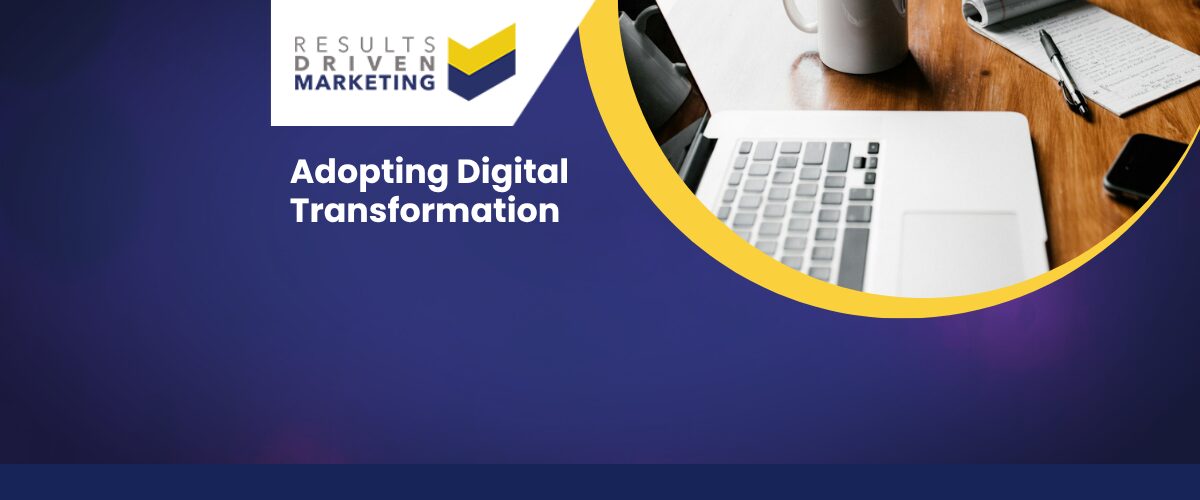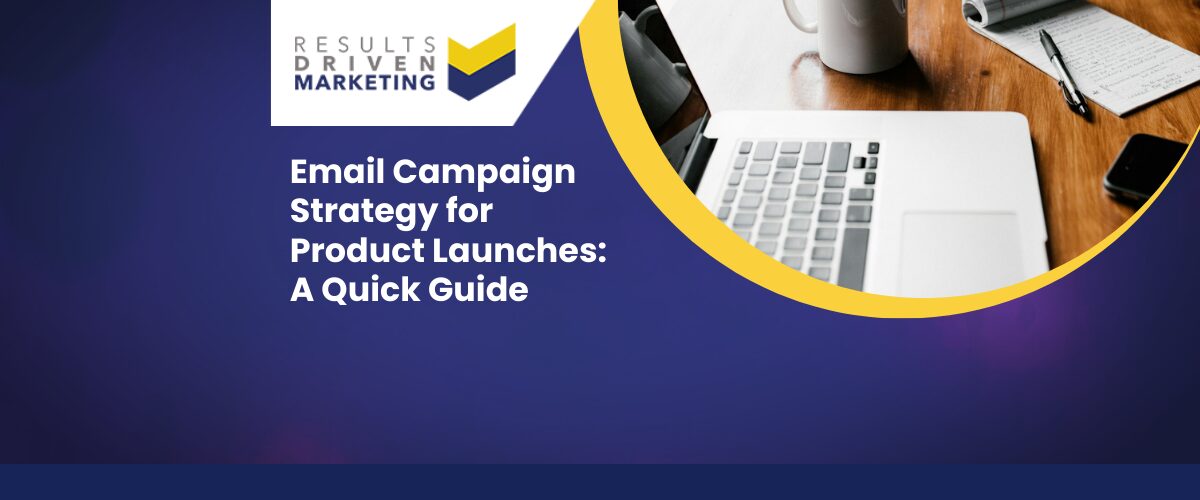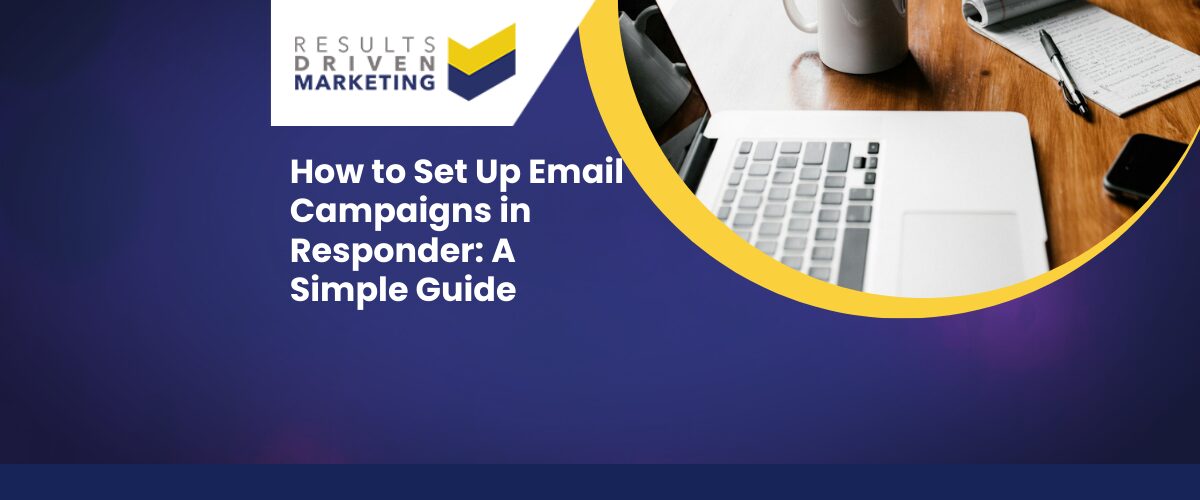
How to Use Cold Data Without Damaging Your Reputation
Using cold data can be one of the fastest, most scalable ways for small and medium-sized businesses to generate leads and drive growth—but only if it’s done right.
For many SME decision-makers in the UK, the idea of reaching out to people who’ve never heard of your business feels risky. You worry about coming across as spammy. You don’t want to damage your brand. And with GDPR in play, there’s a real concern about compliance.
That hesitation is understandable. But the problem isn’t the data—it’s how it’s used.
Table of contents:
Cold Doesn’t Have to Mean Cold-Hearted
We’ve all experienced bad cold outreach:
-
Emails that are clearly mass-produced and irrelevant
-
Phone calls that don’t respect your time
-
Messages that offer nothing of value but ask for everything
These approaches give using cold data a bad name. But they’re not inevitable.
Imagine instead receiving a concise, relevant message that understands your role, offers useful insight, and makes no hard ask. That’s the kind of cold outreach that works—because it puts the person, not the pitch, at the centre.
A Smarter Way to Use Cold Data
At Results Driven Marketing, we help businesses turn cold data into warm opportunities—without compromising their reputation. That means:
-
Choosing the right data source and audience
-
Planning the campaign before hitting “send”
-
Writing outreach that feels personal, not pushy
-
Staying compliant and professional at every step
This guide will show you exactly how to do that.
What You’ll Learn
You’ll leave with a clear, practical framework for:
-
Getting results from cold outreach without sounding like a stranger
-
Avoiding the most common mistakes that hurt deliverability and trust
-
Creating campaigns that are thoughtful, compliant, and effective
Cold data can absolutely deliver warm results—when you use it with care. Let’s show you how.
Why Cold Data Still Matters in 2025
With so many new marketing channels, some businesses wonder if using cold data is still relevant. Spoiler alert: it absolutely is.
In fact, for SMEs looking to grow without blowing their budget, it might be one of the most effective tools available—when it’s used thoughtfully.
Let’s Bust a Common Myth
You’ve probably heard it before: “Cold outreach doesn’t work anymore.”
What that usually means is: “We tried cold outreach without a plan, and it flopped.”
The truth is, using cold data still works—plenty of businesses are using it right now to:
-
Break into new markets
-
Generate leads faster than content marketing alone
-
Test messaging and offers with real decision-makers
But here’s the catch: today’s buyers are savvier than ever. That means lazy, untargeted outreach falls flat, while tailored, relevant messaging gets traction.
Cold Outreach Offers Something Other Channels Don’t: Control
SEO takes time. Social media is hit-and-miss. Paid ads are getting more expensive every month.
Cold outreach—especially via email, phone, or direct mail—gives you something rare: control.
You choose who to contact, when, how, and with what message. You’re not waiting to be discovered—you’re making the first move.
For SMEs, that control means you can be proactive without needing a six-figure marketing budget.
The Right Message Can Still Cut Through
Here’s a quick real-world example.
A client of ours—a small software provider—used a clean, segmented list to reach out to operations managers in logistics firms. Their cold email wasn’t flashy. It simply said:
Hi Tom, we’ve helped a few UK logistics firms reduce admin time by 30%—often in the first month. If you’re still using spreadsheets to track jobs, would it be worth sharing what we’ve seen work elsewhere?
It worked. The open rate was solid, replies were genuine, and they booked multiple calls in week one. Using cold data helped them start conversations that SEO and social hadn’t been able to.
Cold outreach may never be trendy—but when you approach it with relevance, clarity, and intent, it still delivers.
Next, we’ll look at what not to do—because the fastest way to ruin a good campaign is by ignoring the reputation risks.
The Reputation Risks of Poor Cold Outreach
Using cold data can open doors—or slam them shut. The difference comes down to how you approach it.
While cold campaigns can generate leads quickly, rushing in without a plan, proper targeting, or respectful messaging can do real damage to your business. And for SMEs, reputation is everything.
What Happens When Cold Outreach Goes Wrong
We’ve all seen the bad kind of outreach—messages that feel generic, irrelevant, or just plain annoying.
Here’s what that looks like in practice:
-
A cold email lands in a decision-maker’s inbox with no context, no relevance, and no value—and ends up in spam.
-
A telemarketing call interrupts a busy MD with a pitch that has nothing to do with their business—click.
-
A follow-up email arrives just a day after the first, demanding a reply—unsubscribe.
Each of these moments might seem small, but together they create a pattern: “This company doesn’t get me. They’re not professional. They’re not worth my time.”
And in B2B, those impressions linger.
The Red Flags That Signal Your Campaign Might Be Harming Your Brand
You don’t need angry replies to know something’s off. Watch out for these subtle—but serious—warning signs:
-
High bounce rates: Suggests your list is outdated or low quality.
-
Low open and click-through rates: Indicates your subject lines or messaging aren’t resonating.
-
Frequent unsubscribes or spam reports: A clear sign that people feel your outreach is irrelevant or intrusive.
-
Dead silence: If nobody responds—positively or negatively—it often means your message is being ignored, which can be just as damaging.
These metrics don’t just hurt campaign performance—they erode your email domain reputation, impact future deliverability, and chip away at the trust your brand is trying to build.
One Bad Campaign Can Leave a Lasting Impression
Unlike a paid ad that disappears when the budget runs out, a poorly received cold message can stick in someone’s mind—or inbox—for weeks. If your company becomes known for sloppy outreach, you don’t just lose one lead… you risk losing the trust of an entire segment.
But the good news? These risks are completely avoidable.
With a bit of planning and care, you can run cold campaigns that are thoughtful, compliant, and brand-enhancing—not brand-damaging.
Next, we’ll walk through how to lay the right foundation so your campaign builds credibility from the first touch.
Laying the Groundwork for a Respectful, Results-Driven Campaign
Before sending a single message or making that first call, it’s worth remembering:
Just because you can contact someone doesn’t mean you should—at least not without a plan.
Using cold data effectively starts long before the outreach begins. It requires you to be intentional about your goals, your audience, your message, and your delivery method.
Here’s how to build a campaign that’s not only results-focused, but reputation-safe.
Start with a Clear, Measurable Goal
Every great campaign begins with a simple question: What are we trying to achieve?
Are you aiming to:
-
Generate leads for a specific product or service?
-
Book meetings with decision-makers?
-
Promote a webinar, event, or download?
-
Test a new message or market segment?
Your goal will shape everything else—from how you segment your data, to what your messaging should say, to how success is measured. Without a clear objective, your campaign is just noise.
Choose the Right Channel (or Channels)
Not every message belongs in an email—and not every prospect wants a phone call. Choosing the right delivery method for your message is crucial.
Cold email is great for:
-
Low-pressure introductions
-
Sharing valuable content
-
Reaching decision-makers at scale
➡️ Link to Email Lists page
Telemarketing works well for:
-
Time-sensitive campaigns
-
Qualifying leads quickly
-
Booking appointments with warm interest
➡️ Link to Telemarketing Data page
Direct mail can be effective for:
-
High-value accounts
-
Creating standout, tactile experiences
-
Follow-up after digital contact
➡️ Link to Direct Mailing Data page
📌 Tip: Multichannel campaigns often perform best. A well-sequenced email + phone + follow-up approach feels proactive, not pushy.
Make Sure Your Data Is Clean, Targeted, and Compliant
This is non-negotiable. The best message in the world won’t work if it’s going to the wrong person—or a dead inbox.
What to look for when using cold data:
-
Recency: Is the data up to date and regularly verified?
-
Relevance: Are you targeting the right industries, roles, and business sizes?
-
Segmentation: Can you break the list down by geography, turnover, or decision-maker level?
-
Compliance: Was the data sourced ethically and does it meet UK GDPR standards?
⚠️ Many campaigns fall apart here—not because of messaging, but because the list itself was poorly sourced.
With Results Driven Marketing, every list we supply is fully GDPR-compliant, regularly cleaned, and tailored to your exact needs—so you can focus on results, not risk.
With your data, goals, and delivery strategy in place, you’re ready to build a campaign that treats prospects like people—not just entries on a spreadsheet.
Next, we’ll dive into how to plan and structure that campaign so it gets noticed—and gets results.
Campaign Planning Best Practices
With the right data and a clear objective, the next step is turning your plan into action—crafting a campaign that cuts through the noise and invites real engagement.
Whether you’re using cold data to send emails, make calls, or send direct mail, the same principle applies: be relevant, be respectful, and be useful.
Make Cold Feel Warm: Start With Empathy, Not a Sales Pitch
No one enjoys receiving an email that screams “mass send.” And even fewer people respond to one.
Instead, ask yourself:
-
What does this person care about right now?
-
What problem do they face that we can help solve?
-
How can we show that we understand them—even if we’ve never met?
A cold message doesn’t need to be long. It just needs to feel considered.
Example of poor outreach:
“Hi, we offer business solutions that help companies like yours save time and money. Want to talk?”
Example of smart outreach:
“Hi Claire, noticed you’ve recently hired for several new roles—congrats. We’ve worked with a few growing firms to help streamline onboarding and payroll. Want me to share what’s worked?”
That’s how you make using cold data feel like a conversation, not a collision.
Lead With Value—Then Ask for Engagement
People are more likely to respond when they get something before being asked for something.
Instead of going straight for the hard ask (“Can we book a call?”), offer something of immediate value:
-
A case study or short industry insight
-
A checklist or quick diagnostic
-
A relevant stat or success story
Then, offer a low-commitment next step:
“Would it help if I sent over a short case study on how another SME tackled this?”
That’s more inviting than:
“Let’s schedule a 30-minute demo this week.”
Sequence Matters: Think in Stages, Not Blasts
The best cold campaigns aren’t one-offs—they’re sequences. Thoughtfully spaced, purposefully written messages that guide the prospect from awareness to curiosity to response.
Here’s a simple cold email sequence structure:
-
Email 1: Introduction and value offer
-
Email 2 (2–3 days later): Nudge or new angle (e.g. case study, testimonial)
-
Email 3 (5–7 days after): Final follow-up with clear opt-out and recap
Cold call tip: Follow a call script that’s flexible enough to sound human. Don’t pitch—probe and listen.
The goal is to create momentum, not pressure.
Respect the Opt-Out—and Don’t Chase Too Hard
If someone’s not interested, let them go gracefully. Over-chasing doesn’t just hurt your chances with that contact—it can get you flagged or blocked.
Always include a clear opt-out in your emails. For phone campaigns, have a polite, rehearsed way of handling objections or refusals. Professionalism here leaves the door open for future conversations.
Thoughtful campaign planning turns cold data into meaningful outreach. Next, we’ll look at how to stay compliant—without losing momentum.
How to Stay Compliant Without Killing Your Momentum
There’s a common fear among SME marketers:
“If I follow all the rules, will I still be able to run a cold campaign that actually works?”
The good news is—yes, you absolutely can.
Using cold data in the UK is legal and effective if you follow a few simple guidelines. You don’t need a law degree or a compliance officer. You just need to know where the lines are—and how to stay comfortably within them.
What the Law Actually Says (Without the Legalese)
UK GDPR allows you to contact business professionals using their work details—as long as your message is relevant to their role and your outreach is respectful.
Here’s what that means in practice:You’re contacting corporate addresses (like sarah@company.com), not personal Gmail or Hotmail accounts
Your message is clearly relevant to the recipient’s job or business interests
You include an easy way to opt out or unsubscribe
You clearly identify who you are and why you’re contacting them
That’s it. If your list is clean, your messaging is responsible, and your campaign is transparent, you’re on solid ground.
Choose a Trustworthy Data Partner
This might be the most important decision you make.
Not all data is created equal. Working with the wrong supplier can leave you exposed to:
-
Outdated records (hello, bouncebacks)
-
Irrelevant targeting (wasted effort)
-
Non-compliant data (legal risk)
At Results Driven Marketing, we specialise in GDPR-compliant, up-to-date, and accurately segmented cold data—so your campaigns start from a place of trust, not trouble.
We make sure every contact on your list is:
-
Verified and current
-
Segmented by job role, industry, and company size
-
Sourced and processed with full compliance in mind
That means you can focus on writing great messages—not second-guessing your data source.
Don’t Let Compliance Kill Confidence
Too many businesses avoid cold outreach because they’re scared of doing it wrong. But in reality, it’s not hard to stay compliant and effective.
If your cold message:
-
Respects the recipient’s time
-
Speaks directly to their business challenges
-
Offers something useful
-
Makes it easy to opt out
…then you’re not being intrusive—you’re being professional.
When you take the time to understand the rules and follow best practices, using cold data becomes a strategic advantage, not a legal headache.
Next up: how to track, improve, and fine-tune your campaign once it’s live—because good data deserves smart follow-up.
Monitoring, Adjusting, and Improving Your Campaign
You’ve planned carefully, chosen the right audience, and crafted messages that sound human—not robotic. Great. But once the campaign goes live, your job isn’t done.
To get the best results from using cold data, you need to track what’s happening, learn from it, and make smart adjustments. Because even the best campaigns can improve—and small tweaks often lead to big gains.
What to Track (And What It Really Tells You)
Cold outreach lives and dies by the data. Not just the contact list, but the performance metrics that show whether your message is landing—or being ignored.
Here are the key indicators to keep an eye on:
-
Open rates: A solid open rate usually means your subject line and sender name are working. If it’s low, test both.
-
Click-through rates (CTR): If people are clicking but not replying, your offer may be unclear—or not compelling enough.
-
Reply rates: This is the gold standard. Even a polite “no thanks” is better than silence—it shows your message reached a human.
-
Bounce rates: High bounce rates = poor data quality. This damages your email reputation and signals it’s time to clean your list.
-
Unsubscribe or complaint rates: If these creep up, your message may be too frequent, too generic, or not relevant to the audience.
👉 Tip: Look at these metrics in combination. A high open rate with no replies tells a different story than a low open rate with a few warm leads.
Test, Learn, Improve
One of the biggest advantages of using cold data is the ability to test ideas quickly.
Try A/B testing:
-
Two different subject lines (e.g., question vs. benefit)
-
Slight variations in your email opening
-
Different call-to-action styles (soft ask vs. more direct)
-
Timing—e.g., Tuesday at 10am vs. Thursday at 2pm
Run small tests, measure results, and apply what you learn. The best campaigns are built through iteration, not guesswork.
Listen to Replies—They’re the Best Feedback You’ll Get
Not all insights come from numbers.
A prospect’s response—positive or negative—can tell you more than a dashboard ever will:
-
“Where did you get my details?” → Revisit your opening line or source
-
“Not interested, but thanks for the message.” → You were polite and professional—this contact might come back later
-
“Sure, tell me more.” → Your message hit the mark—time to move fast
Every reply is a clue. Use them to refine your messaging, segment better next time, and identify who’s most likely to engage.
Re-Engage, Don’t Just Discard
Just because someone didn’t respond the first time doesn’t mean they’re a lost cause.
Many campaigns can—and should—include a second or third wave of outreach:
-
Reframe the offer
-
Share new value (e.g. a case study, fresh insight, or limited-time incentive)
-
Adjust timing or delivery channel
If the data is still clean and relevant, it’s still an opportunity. Don’t waste it.
In the final section, we’ll wrap everything up and show how to move from cautious cold outreach to confident, repeatable results.
Final Thoughts — Cold Data, Warm Results
Using cold data doesn’t have to feel like a gamble. Done right, it can be one of the most effective, scalable, and surprisingly human ways to grow your business.
You don’t need flashy funnels or giant ad budgets. You just need:
-
The right audience
-
A clear message
-
Respect for your prospect’s time
-
And a plan that balances strategy with sincerity
When you treat cold outreach as an opportunity to help—not just to sell—you build trust, open doors, and start real conversations.
Let’s Recap
Here’s what we’ve covered:
-
Cold data is still powerful—but only when used thoughtfully
-
Poor outreach can hurt your brand, but smart planning prevents that
-
Choosing the right channel and message makes cold feel warm
-
Compliance is easier than most people think (especially with the right data partner)
-
Great campaigns are built through testing, listening, and improving
You now have a roadmap for using cold data that’s not only effective—but reputation-safe and customer-focused.
Need a Trusted Partner to Help You Start?
At Results Driven Marketing, we’ve helped over 1,000 UK SMEs use cold data the right way—combining GDPR-compliant lists with tailored guidance and campaign support.
Whether you’re building your first outreach or want to improve an existing one, we’re here to help you:
📞 Speak with a data expert
📧 Plan your next campaign
✅ Get data that’s clean, targeted, and ready to deliver results
Contact us today to get started—or just ask a few questions. No pressure. Just practical help.





